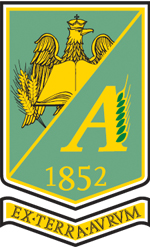Published in Scientific Papers. Series A. Agronomy, Vol. LXVI, Issue 2
Written by Victor ŢÎŢEI
Common nettle, Urtica dioica L., is an herbaceous perennial forb belonging to the Urticaceae family, distributed in temperate and tropical region in many parts of the world, and it has been reported to have multiple uses. We investigated the quality of the biomass of the local ecotype of Urtica dioica grown in the experimental plot of the “Alexandru Ciubotaru” National Botanical Garden (Institute), Chisinau, Republic of Moldova. The results revealed that the dry matter of the common nettle whole plant harvested in flowering period contained 20.7% CP, 10.6% ash, 26.8% CF, 32.9% ADF, 57.4% NDF, 6.6 % ADL, 26.3% Cel, 24.5% HC, with forage value 633 g/kg DDM, RFV= 103, 12.47 MJ/kg DE, 10.23 MJ/kg ME and 6.25 MJ/kg NEl. The ensiled mass contained 22.1% CP, 14.5% ash, 28.3% CF, 33.8% ADF, 53.0% NDF, 6.6 % ADL, 27.3% Cel, 19.2% HC, with forage value 626 g/kg DDM, RFV= 110, 12.34 MJ/kg DE, 10.13 MJ/kg ME and 6.14 MJ/kg NEl. It has been determined that studied common nettle substrates have C/N=13.4-15.0 and the biochemical methane potential reaches 319-321 l/kg ODM. The local ecotype of Urtica dioica can be used as an alternative forage source for farm animals or as co-substrate in biogas generators for renewable energy production.
[Read full article] [Citation]




